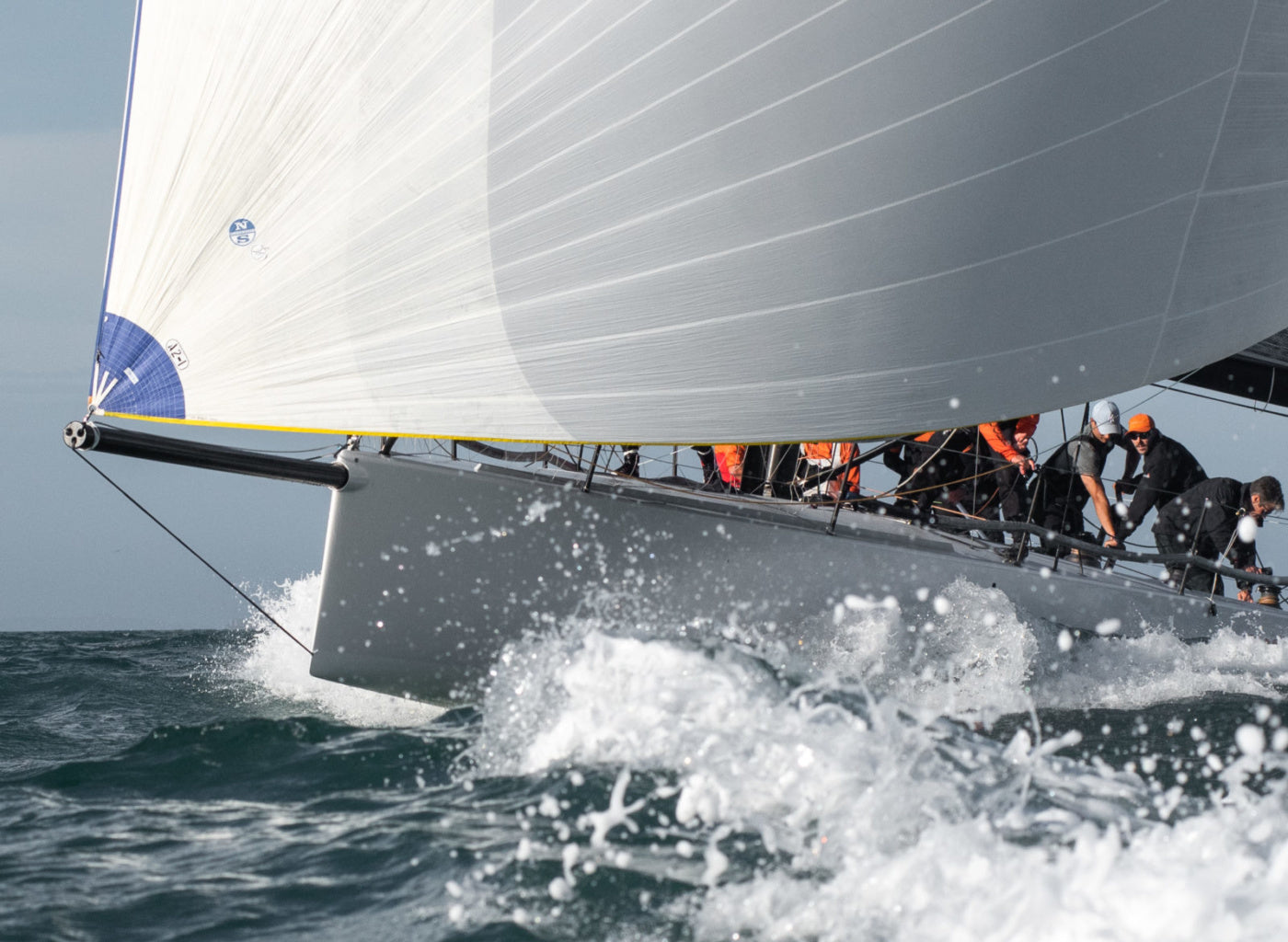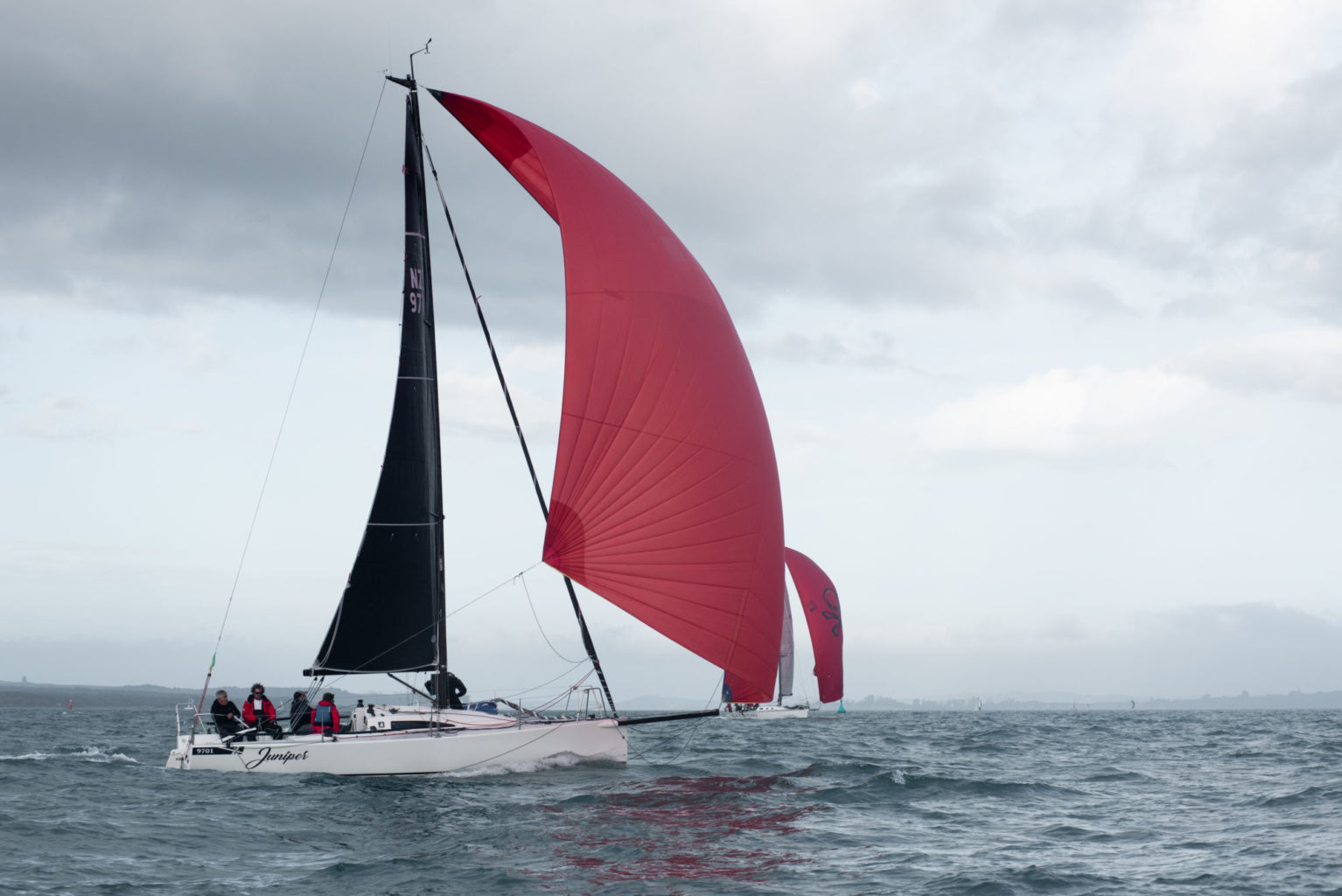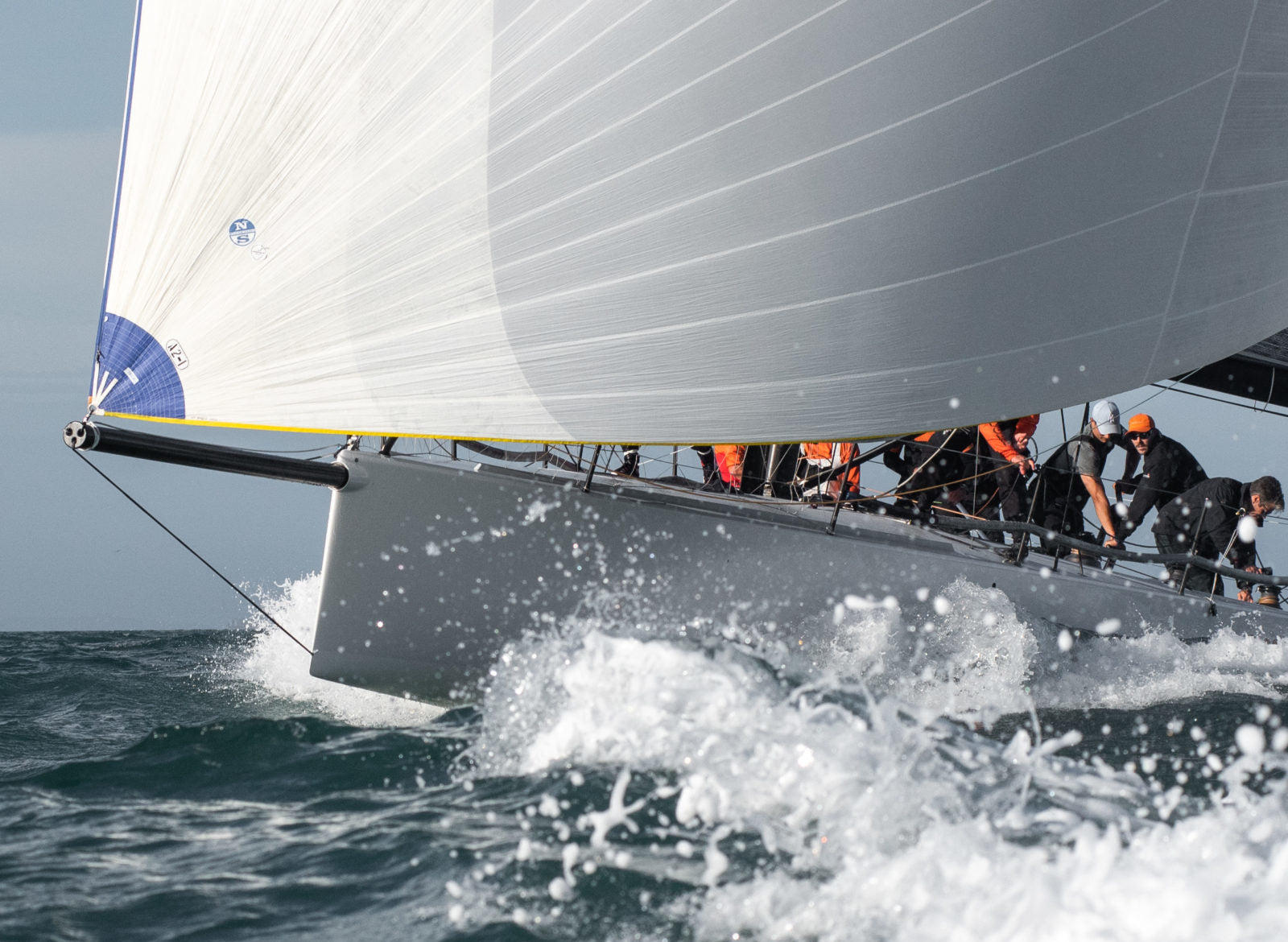ALL ABOUT DOWNWIND SAIL TRIM
ALL ABOUT DOWNWIND SAIL TRIM
Tips for Off-Wind Angles

Reaching
Close Reaching
As you bear away from close-hauled to a close reach the forces on the sails rotate forward, speed jumps, and heeling forces are reduced. To make the most of the wider wind angle, retrim the sails for the new course. Ease the jib and, for best performance, move the lead outboard and forward, chasing the clew of the sail with the lead. Keep the halyard firm to hold the draft forward and prevent the back of the sail from becoming too round. If the lead is not moved as the sheet is eased, then the top of the sail will twist open, spilling power, and the bottom of the sail will hook in toward the boat, creating excess drag.
With the jib trimmed outboard, ease the main. Keep the vang tight, and ease the mainsheet or lower the traveler. As the main goes out, heeling forces decrease, and the boat accelerates. As the boom goes out, the vang is critical to control twist. As an initial setting, take the slack out of the vang while trimmed for close-hauled. As you turn to a reach and ease the mainsheet, the vang will go taut, preventing the boom from rising and the leech of the main from spilling.
When overpowered on a reach, easing the vang will spill power, reduce heel, and balance the helm. Use the telltales to fine tune trim. The leech telltales should be flowing. If the sail luffs, then trim in. Also, ease the outhaul and backstay slightly to add power to the main. On a heavy air “blast reach” keep the main flat, and ease it to half luffing, if necessary, to control heeling forces and weather helm. If still overpowered, then reef.
On a close reach, a reefed main and big jib can be an effective sail combination.
Beam to Broad Reaching
As we bear off more, the boat stands upright. Ease sails, using the telltales to match the angle of attack to your course. On a beam to broad reach, the top of the jib will spill open. Trim to keep the middle of the sail working. Ease the main until it luffs. The main should go way out—out against the rigging if necessary. If the sail doesn’t luff, let it rest against the rig. It won’t hurt the sail or the rig. Keep the boom vang firm enough to hold the top batten of the main parallel to the angle of the boom.
Reaching in a beam or following sea can be treacherous, as the boat lurches around. A preventer (a line that holds the boom out) should be rigged to prevent the boom from swinging wildly. Autopilots are at their worst in these conditions, as are human steerers. A spinnaker can add extra power, speed, and stability. Short of that, motor sailing is an option—or consider a new destination.

Running
Wing and Wing
Running dead before the wind under jib and main requires careful steering to avoid an accidental jibe. In light air, it often pays to reach up, sailing with the jib in normal position, as the extra speed will make up for the extra distance.
In more breeze, running wing and wing (with the main on one side of the boat, and the jib on the other) can be a very stable way to sail dead downwind. A whisker pole will help the genoa fly much more effectively.
The pole should be set with topping lift, afterguy, and foreguy to hold the pole in place. With the pole trimmed to position, the genoa sheet is run and trimmed through the end of the pole.
In heavy air there are often following seas, which can make steering a challenge. A poled out jib allows sailing above a dead downwind course, which provides a wider steering lane and reduces the chance of an accidental jibe.
To control the main and boom, rig a preventer. The line should run from the end of the boom to a block well forward on the rail, and then back to the cockpit, near the mainsheet cleat. Every time you ease the mainsheet, tighten the preventer. It doesn’t have to be bar-taut – just tight enough to prevent the boom from jumping around. If it’s led this way, the preventer can easily be adjusted or cast off as necessary.
Learn more about trimming an asymmetrical spinnaker here.

Gennaker Trim
Cruising spinnakers or gennakers are remarkable sails for their ability to change shape to match your course and wind angle. By trimming both the tack line and spinnaker sheet, we can transform the sail from a genoa to a spinnaker, and back again. For best performance, a symmetric spinnaker must carry a curl. In contrast, a gennaker will deliver top performance without trimming on the edge of a luff. Ease the sheet until it curls to make sure the sail is not overtrimmed, and then trim just enough to remove the curl. For optimum performance, play the gennaker sheet constantly. (Me? I check it between naps.)
Learn more about cruising sail trim here. What’s the difference between a spinnaker and a gennaker? Learn more here.
Adjusting the Tack Line
It is adjustments to the tack line that allow us to so drastically change the shape and performance of the sail. On beam reaches, keep the tack line snugged down and the luff of the spinnaker pulled firm. The Gennaker assumes the shape of a great reaching genoa.
On a broad reach, ease the tack line and allow the tack to lift. Easing the luff lets the Gennaker roll out from behind the mainsail to assume a more powerful spinnaker-like shape.

Spinnaker Trim
There are three initial settings for spinnaker trim and refinements that can further improve performance.
For starters:
- Trim the guy to set the pole perpendicular to the wind.
- Raise or lower the topping lift so the pole and tack are the same height as the clew.
- Ease the sheet to curl the luff, and trim to just take out the curl.
- From these initial settings we can fine tune trim in several ways.
Unless it’s very windy, the guy can be trimmed aft further than square to the wind. The goal is to get the luff to run vertically from the shoulder of the spinnaker down to the tack, and to get the shape across the foot to match the mid shape.
If the shoulder is rolled out, and the foot is too round, then trim the guy to pull the pole aft. If the foot is stretched flat, and the tack is poking out to windward, then ease the guy to let the pole forward.
Learn more about setting a spinnaker here.
Pole height can be fine tuned:
On a broad reach fly the pole higher, keeping the two corners (clew and tack) even. In fresh breeze beware of flying both corners too high, which lets the spinnaker get too far from the boat and may decrease stability. If the boat is rolling side to side, try lowering the pole, pulling the pole aft, and/or choking down the sheet lead.

VMG Tip
In lighter winds, the key to success is sailing fast angles. Do not sail dead downwind in light air—reach up until you feel some apparent wind from the side. Often the best course may be as much as 40 degrees above straight downwind. You’ll sail extra distance, but you will go so much faster that you’ll arrive downwind sooner, and you’ll have a more enjoyable sail to boot!
See also: How to Hoist and Douse a Gennaker



























